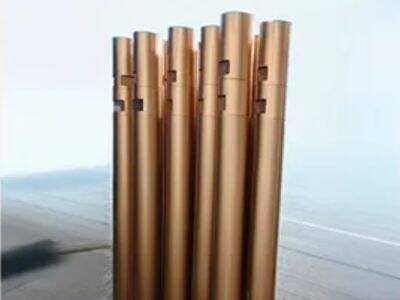DTH hammers are pneumatic tools used in drilling to fracture rocks and form holes in the ground. These will have extreme versatility which would allow you to use them in different kinds of rock formations. But how about using the same DTH hammer in different rock types? Let's take a look at this topic and find out more about how DTH hammers operate.
Investigating the flexibility of DTH boring in various rock types
DTH hammers can work on several types of rock, including but not limited to soft sedimentary rock, hard sandstone, hard limestone, and hard gray, blue, and black shale. They function by having air pressure push a piston that hits the drill bit at the bottom of the hole. This force shatters the rock, and is blown clear of the hole by either air or water.
Efficient drilling by utilizing one DTH hammer for several different rock types
Using a single DTH hammer across multiple rock types can make the most of drilling productivity. By choosing the proper hammer and drill bit type for the job, operators can maximize drilling speeds and minimize downtime for tool changes. This could be particularly advantageous where projects require drilling through multiple types of rock on the same borehole.
Single the dilation problems associated with using one DTH hammer across different geologies
Re-using one dth hammer on several different types of rock may be cost-effective and time-saving, yet it is not without its obstacles. Since various rock types have different hardness and abrasiveness, such may be affected to the capability and life of the hammer and bit. The drilling parameters should be closely watched and modified as necessary to minimize early wear and potential damage to equipment.
Development of drilling methods which can be adapted to provide improved performance in various types of rock formations.
Drilliing effciency on rocks can be improved by adjusting the methods of drilling to the individual feature of various rocks. This could be done by changing drilling speed, air pressure, flushing rate or hammer rotation speed for optimal drilling results. Well productivity in all manner of geological conditions may be optimized and consistent hole quality maintained by manipulating these parameters.
Assessing the pros and cons of a common DTH hammer for all drilling applications
Using a single hammer dth for multiple applications can have several advantages, including savings on equipment rental/purchase and decreased tooling changes, contributing to increased drilling productivity. But it also has deficiencies: The head and bit are prematurely worn out and broken when the bit is rotated through an especially abrasive or hard rock formation. These considerations need to be weighed by the operator and taken into account when determining the applicability of a single DTH hammer on their drill program.
Table of Contents
- Investigating the flexibility of DTH boring in various rock types
- Efficient drilling by utilizing one DTH hammer for several different rock types
- Single the dilation problems associated with using one DTH hammer across different geologies
- Development of drilling methods which can be adapted to provide improved performance in various types of rock formations.
- Assessing the pros and cons of a common DTH hammer for all drilling applications

